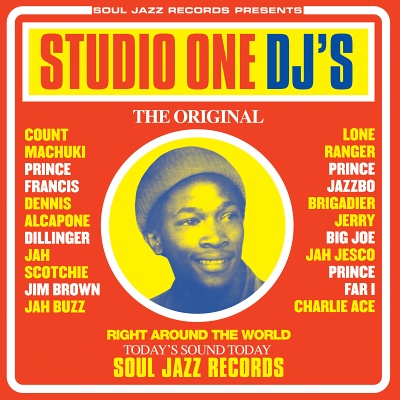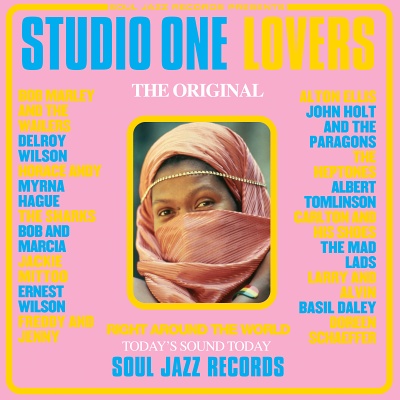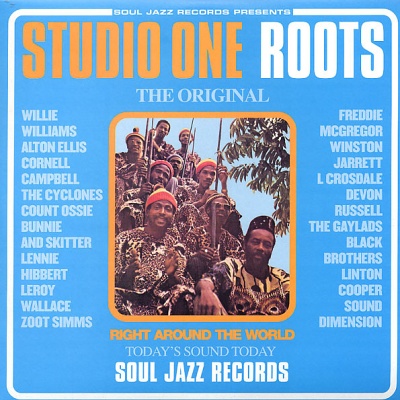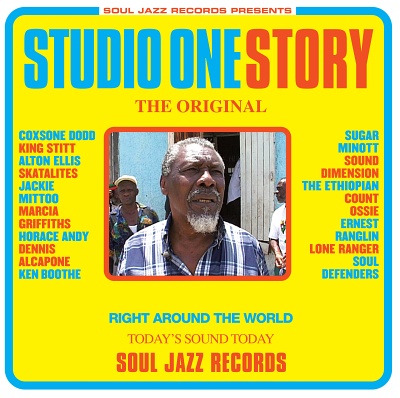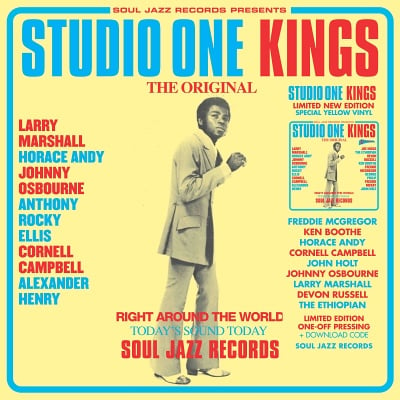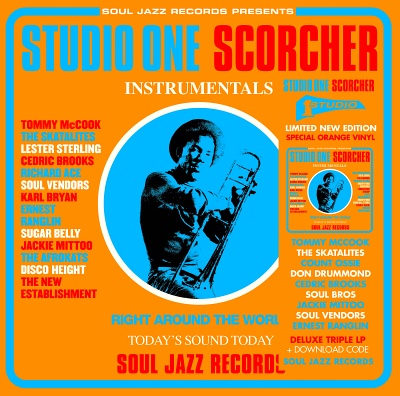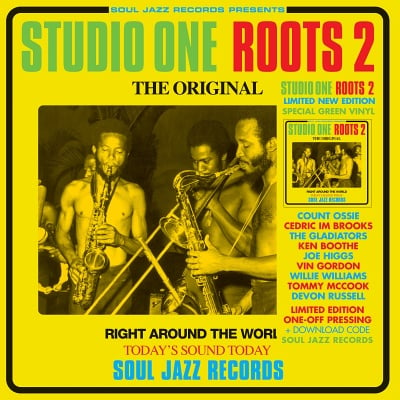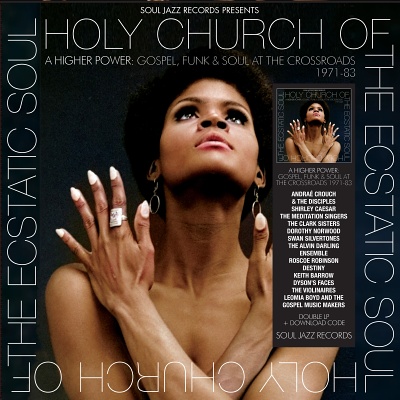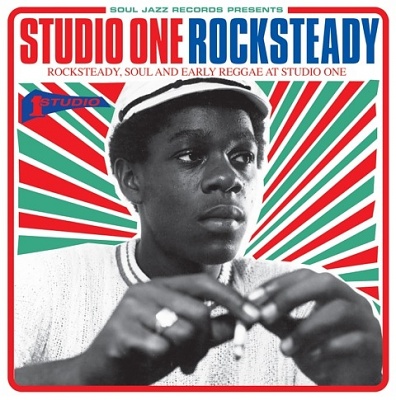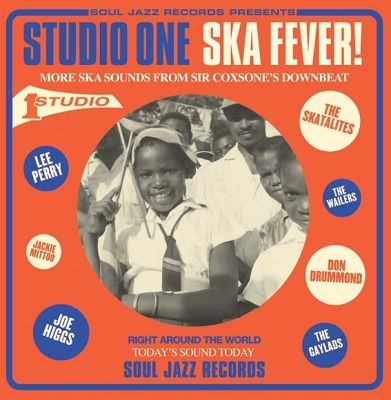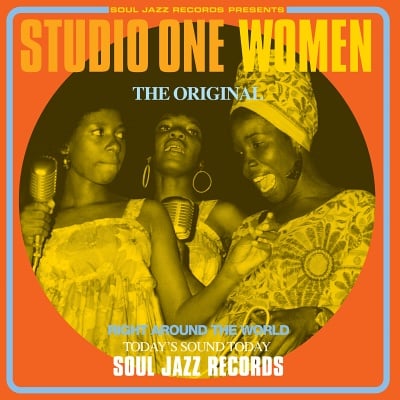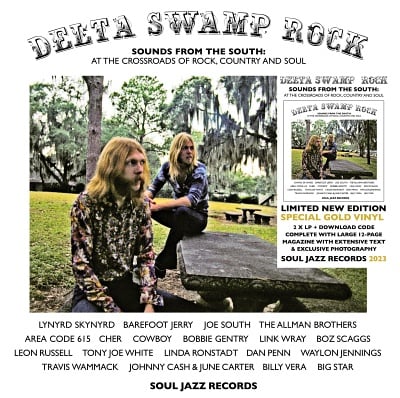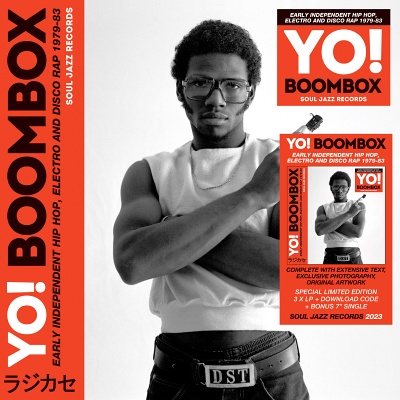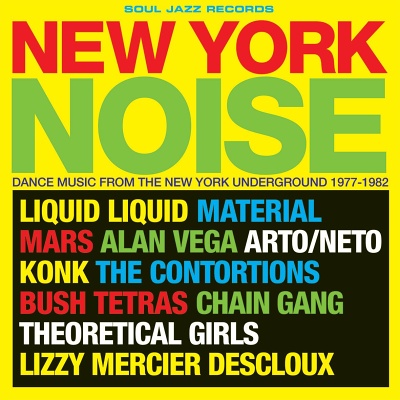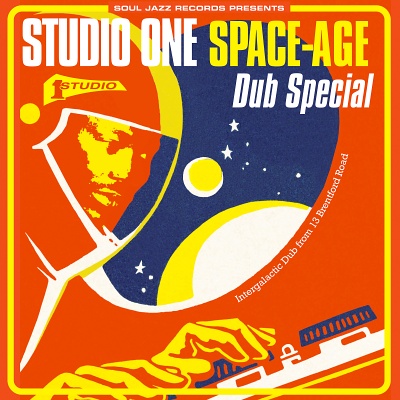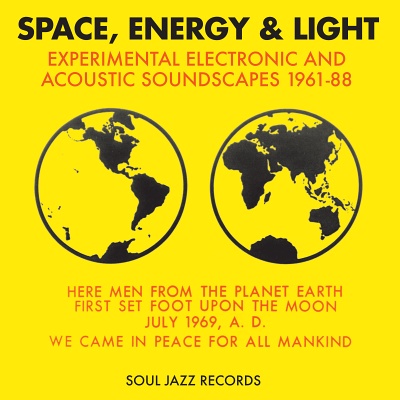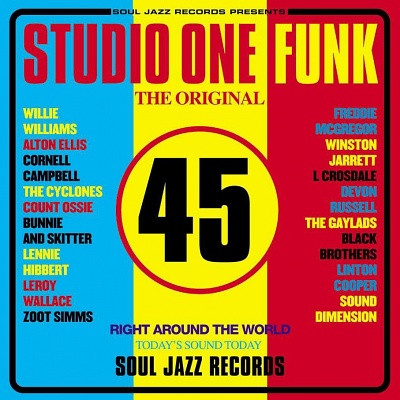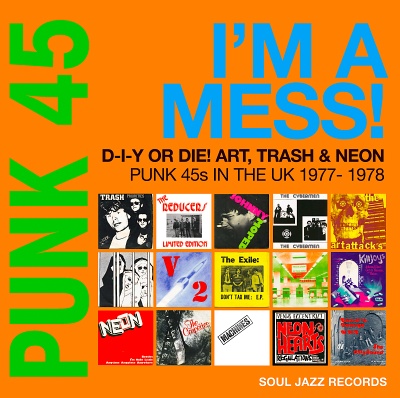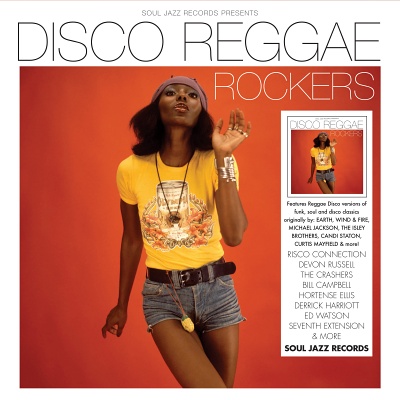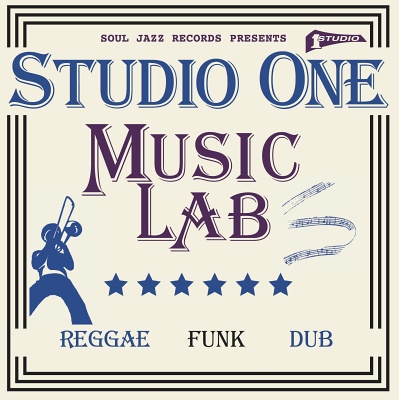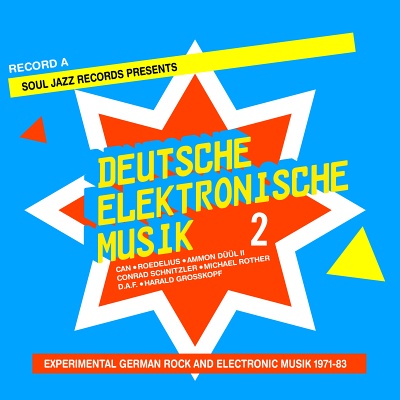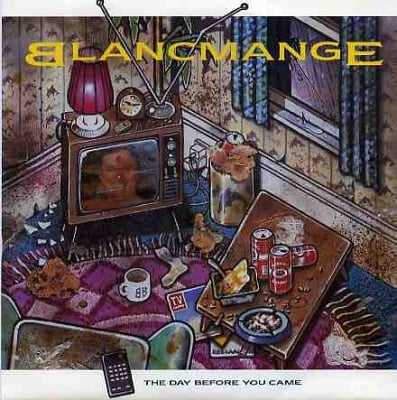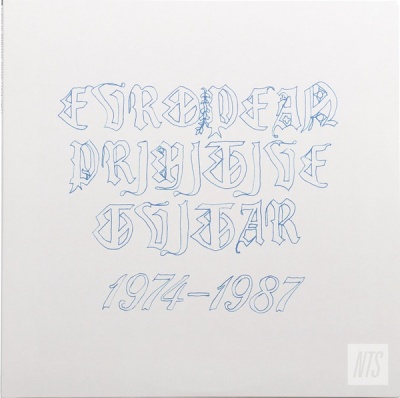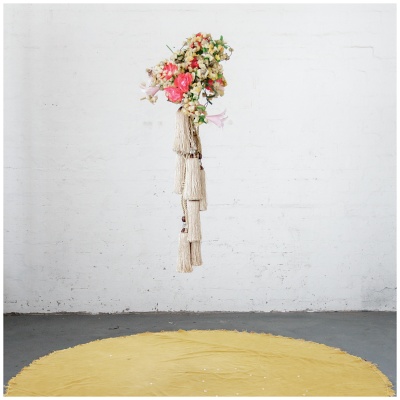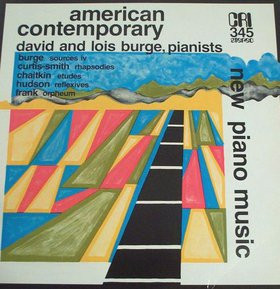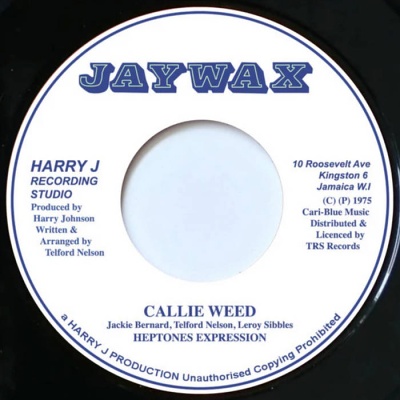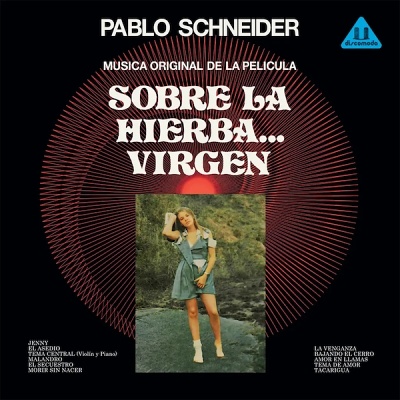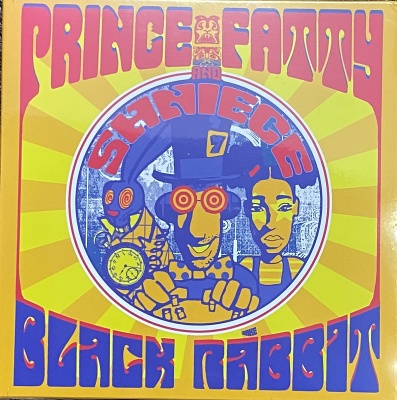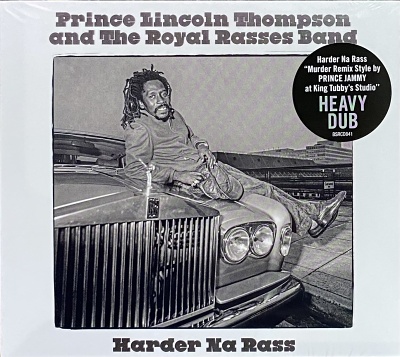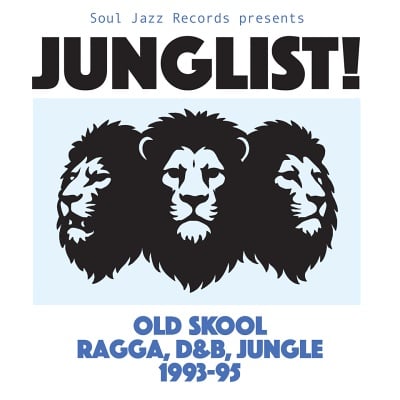
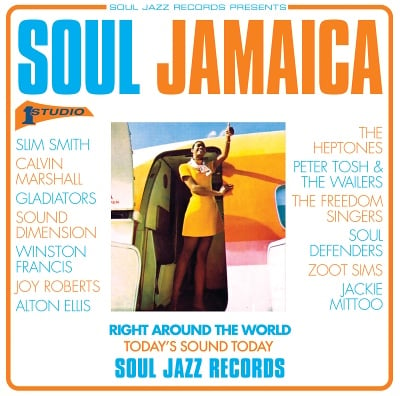
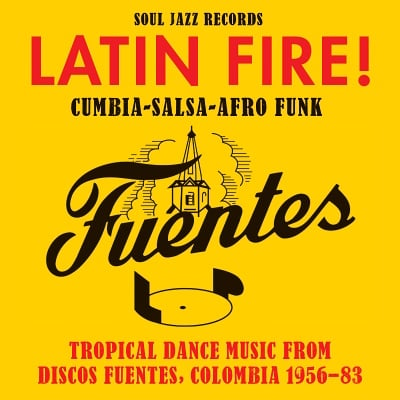
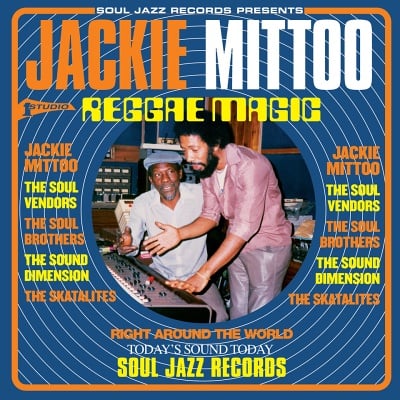
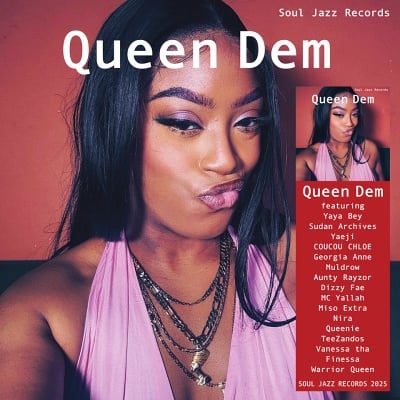

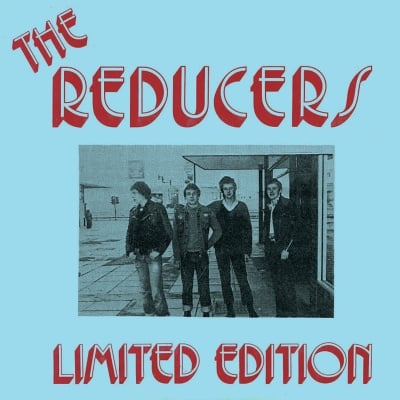
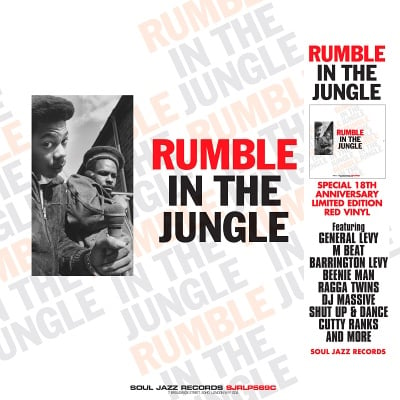
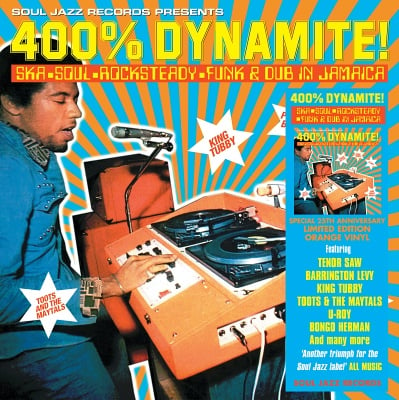
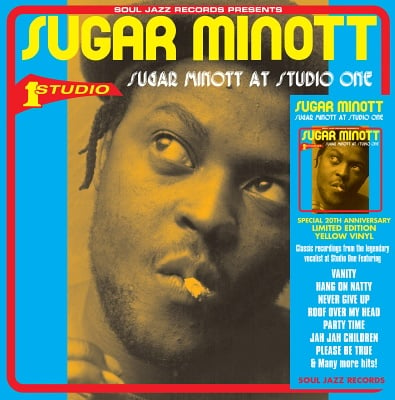
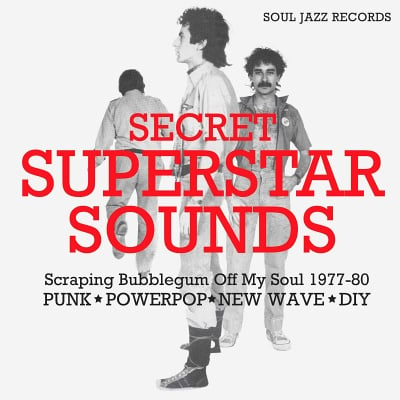
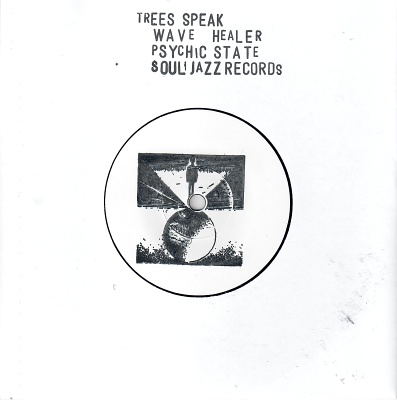
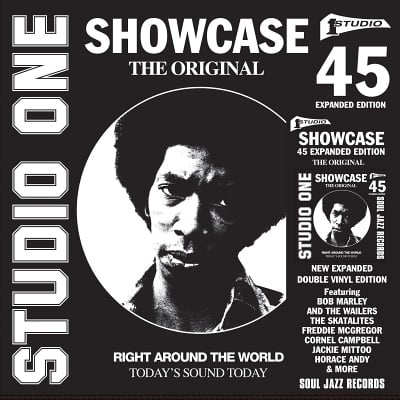
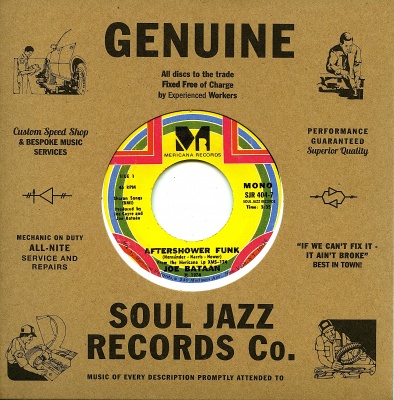
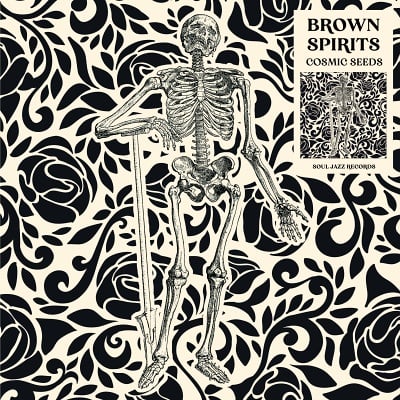
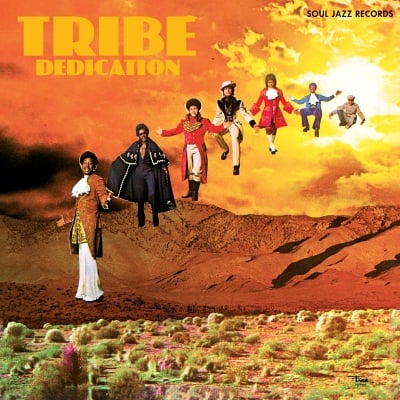

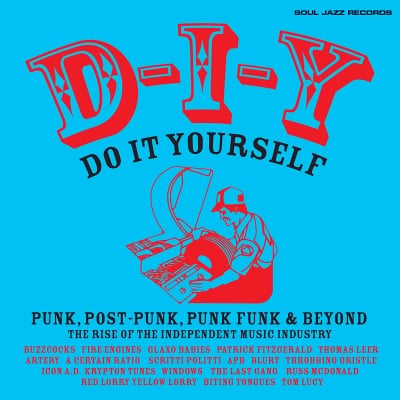
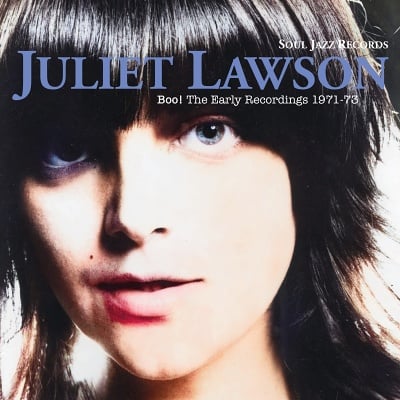
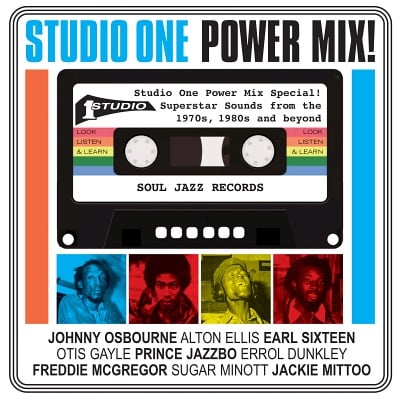
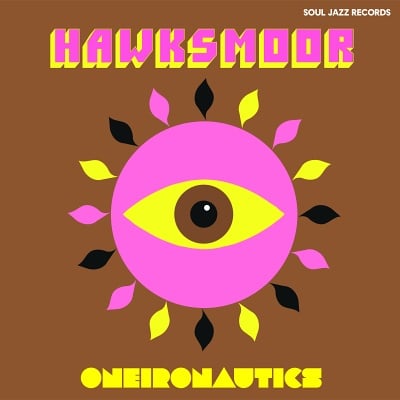
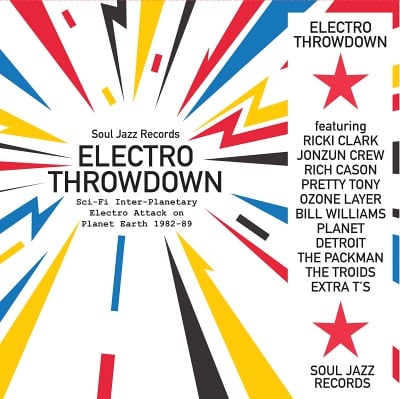
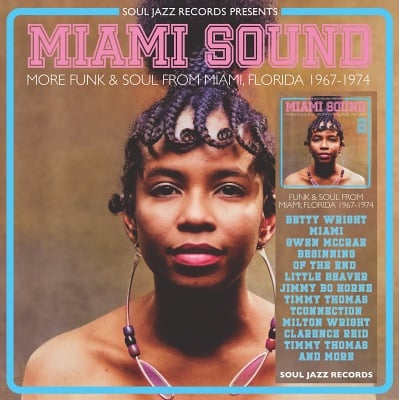
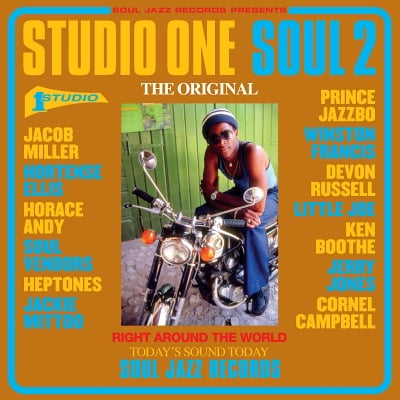
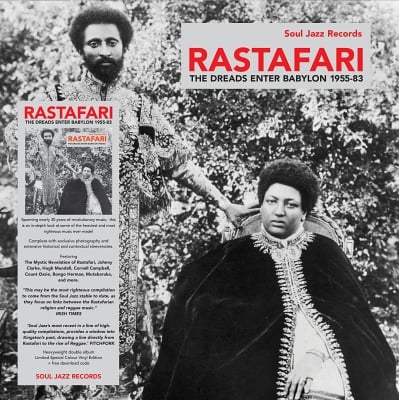
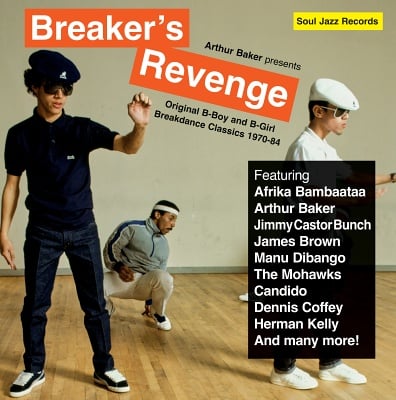
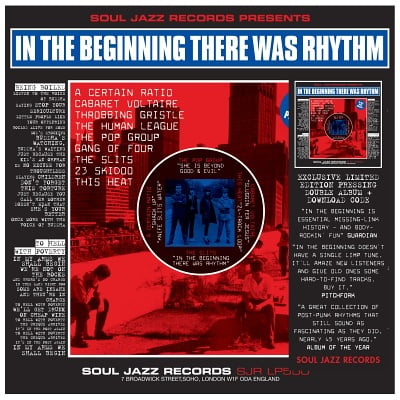
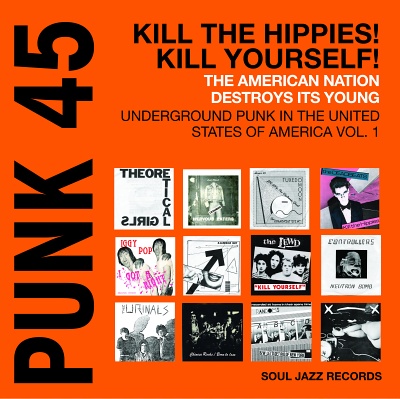
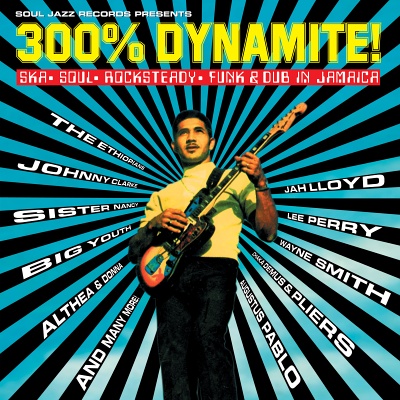
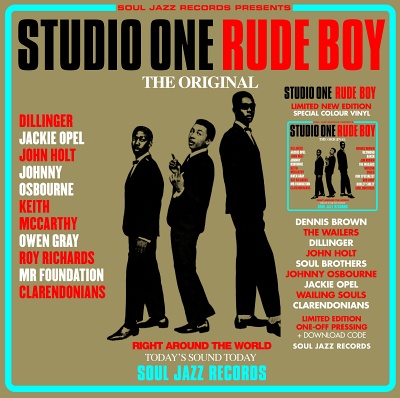
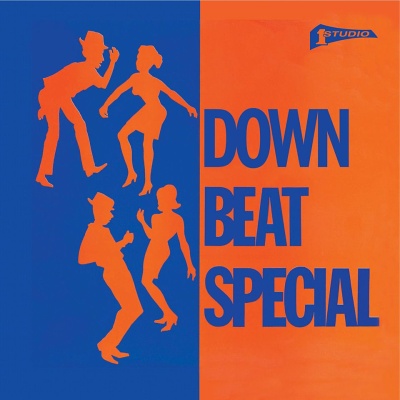
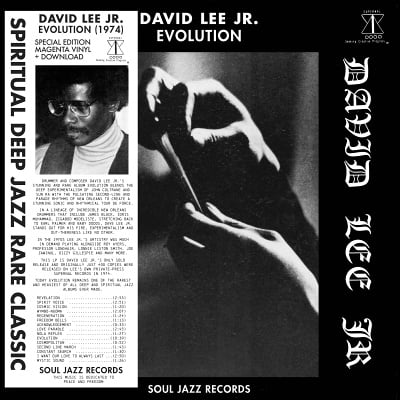
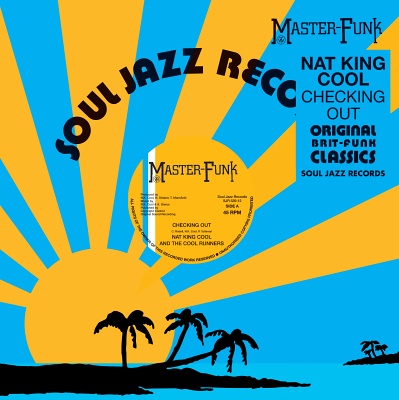
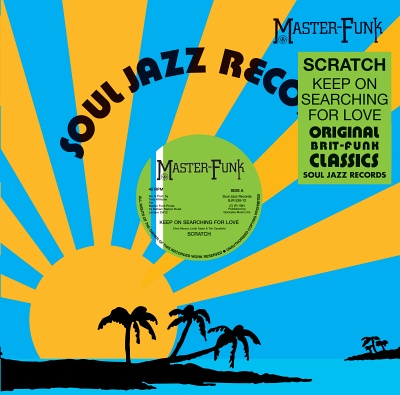
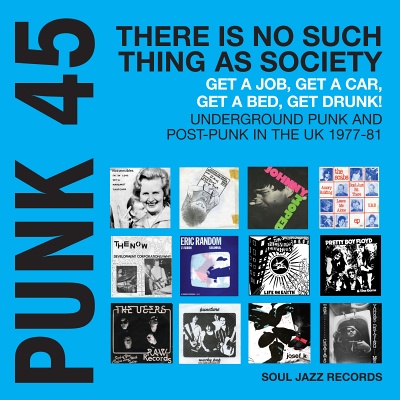

- LP TIME017£29.00Out of stock Notify me when in stock
- – Hiroki Tamaki - River
- – Happy End - Kaze Wo Atsumete
- – Takashi Nishioka - Manin no ki
- – Ken Narita - Gingatetsudo No Noru
- – Hiroki Tamaki - Beautiful Song
- – Niningashi - Hitoribotch
- – Tokedashita Garasubako - Anmari Fukasugite
- – Akaitori - Hotaru
A counterculture movement united by an expansive, experimental and deeply soulful sensibility, Japan’s rebel protest music challenged the status quo and changed the country’s music industry in the process.
The birth of Japan’s nascent acid folk scene was rooted in the messy and invigorating political climate of the late 1960s. It is a story of Dadaists, communists, pharmacists and cult leaders, led by a young generation of upstart students, artists and dreamers hellbent on turning their world upside down.
At the forefront of this movement was Yellow Magic Orchestra’s Haroumi Hosono, a polymath innovator whose band Happy End released the first Japanese language rock album, and whose influence would go on to be felt across Japanese music for decades. Alongside, and informed by the Kansai scene’s Takashi Nishioka and Happy End collaborator Ken Narita, they experimented with cadences and accents of the Japanese language to open the door for others to experiment with their own forms of psychedelic folk too.
- COUCOU CHLOE – Nobody
- Yaeji featuring Nappy Nina – Money Can't Buy
- TeeZandos – Lioness
- Sudan Archives – Selfish Soul
- Miso Extra – 1013
- Aunty Rayzor – Kuku Corona
- Yaya Bey – Meet Me In Brooklyn
- COUCOU CHLOE – Pokerface
- Queenie – Okay Twin
- Yaya Bey – Best Thang
- MC Yallah x Debmaster – Kubali
- Dizzy Fae – Solo
- Vanessa Tha Finessa – Bad Bitch Steppin’
- Dubbing Sun & Blue Hill featuring Warrior Queen – Armageddon
- Georgia Anne Muldrow – Big Mama Africa Jam
- Miso Extra featuring NAYANA IZ – Great Taste
- Nira – Train Of Love
- 1. COUCOU CHLOE – Nobody
- 2. Yaeji featuring Nappy Nina – Money Can't Buy
- 3. TeeZandos – Lioness
- View full info and tracklisting
- 2xLP + Download Code SJRLP575£28.00 £22.40In stockAdd to Bag
- CD SJRCD575£12.00 £9.60In stockAdd to Bag
- MP3 Release SJRD575£9.99In stockAdd to Bag
- M-Beat Featuring General Levy – Incredible
- Barrington Levy & Beenie Man – Under Mi Sensi (X Project Remix)
- The Ragga Twins – Ragga Trip
- Ninjaman, Bounty Killer, Beenie Man & Ninja Ford – Bad Boy Lick A New Shot (Jungle Bullet)
- The Source – Rude Boy State Of Mind
- Shut Up And Dance – No Doubt
- DJ Massive – Final Conflict
- Asher Senator – One Bible
- Poison Chang – Press The Trigger (Half Breed Remix)
- The Ragga Twins – Illegal Gunshot
- Ben Intellect Featuring Ragga G – Oh Jungle
- Cutty Ranks – Limb By Limb (DJ SS Remix)
- The Ragga Twins – Tan So Back
- 1. M-Beat Featuring General Levy – Incredible
- 2. Barrington Levy & Beenie Man – Under Mi Sensi (X Project Remix)
- 3. The Ragga Twins – Ragga Trip
- View full info and tracklisting
- 2xLP (Coloured Vinyl) + Download Code SJRLP569C£34.00In stockAdd to Bag
- Gobblinz – London
- Plummet Airlines – It's Hard
- Xdreamysts – Right Way Home
- Tours – Language School
- The Squares – No Fear
- The Monitors – Compulsory Fun
- The Meanies – It's True
- Jeff Hill Band – Something’s Wrong With My Baby
- The Squad – 24 Hours
- Krypton Tunes – Limited Vision
- The Zeros – Hungry
- The Wardens – Do So Well
- The Letters – Nobody Loves Me
- The Tunnelrunners – Forever Crying At Love Songs
- Comic Romance – Cry Myself To Sleep
- 1. Gobblinz – London
- 2. Plummet Airlines – It's Hard
- 3. Xdreamysts – Right Way Home
- View full info and tracklisting
- New LP SJRLP571£26.00 £21.40In stockAdd to Bag
- CD SJRCD571£12.00 £9.60In stockAdd to Bag
- MP3 Release SJRD571£9.99In stockAdd to Bag
- Freddie McGregor – Beat Down Babylon
- Cornel Campbell – No Man's Land
- Judah Eskender Tafari – Danger In Your Eyes
- Tony & Howie – Fun It Up
- Liberation Group – Namibia
- Winston Francis – Love Me Today, Not Tomorrow
- Roland Alphonso – Jah Shakey
- Joe Higgs – Dinah
- Brown Eagle – Natural Living
- Freddie McKay – So Long, Farewell
- Jackie Mittoo – Mixing
- The Heptones – How Can I Leave You
- The Skatalites – Sudden Destruction
- Lone Ranger – Dance A Fe Cork
- Horace Andy – Mamie Blue
- Johnny Osbourne – Run Up Your Mouth
- Bob Marley and The Wailers – One Love
- The Cables – What Am I To Do
- 1. Freddie McGregor – Beat Down Babylon
- 2. Cornel Campbell – No Man's Land
- 3. Judah Eskender Tafari – Danger In Your Eyes
- View full info and tracklisting
- 2xLP (+ Download Code) SJRLP546£28.00In stockAdd to Bag
- CD SJRCD546£12.00In stockAdd to Bag
- MP3 Release SJRD546£9.99In stockAdd to Bag
- Buzzcocks – Boredom
- Fire Engines – Everything's Roses
- Glaxo Babies – Shake (The Foundations)
- Patrick Fitzgerald – Babysitter
- Russ McDonald – Looking From The Cooking Pot
- Artery – The Slide
- A Certain Ratio – Si Fermir O Grido
- Scritti Politti – Skank Bloc Bologna
- APB – All Your Life With Me
- Blurt – The Fish Needs A Bike
- Icon A.D. – Fight For Peace
- Throbbing Gristle – Distant Dreams (Part Two)
- Krypton Tunes – Coming To See You
- Windows – Creation Rebel
- The Last Gang – Spirit Of Youth
- Thomas Leer – Tight As A Drum
- Red Lorry Yellow Lorry – Paint Your Wagon
- Biting Tongues – You Can Choke Like That
- Tom Lucy – Paris, France
- 1. Buzzcocks – Boredom
- 2. Fire Engines – Everything's Roses
- 3. Glaxo Babies – Shake (The Foundations)
- View full info and tracklisting
- 2xLP (Coloured Vinyl) + Download Code SJRLP552C£28.00 £22.40In stockAdd to Bag
- MP3 Release SJRD552£8.99In stockAdd to Bag
- Otis Gayle – What You Won't Do For Love
- Earl Sixteen – Love Is A Feeling
- Alton Ellis – Back To Africa
- Prince Jazzbo – Apollo 16
- Johnny Osbourne – Eternal Peace
- Errol Dunkley – Don't Do It
- Omega – Bounty Hunter
- Noel Bailey and Sound Dimension – Wiggle's Diggles
- Freddie McGregor – I Am Ready
- Prince Jazzbo – Imperial I
- Jackie Mittoo – Lovers Rock
- Devon Russell – Swing and Dine
- Sugar Minott – Guidance
- Dolly Man – Trigger Happy
- Nana McLean – A Little Love
- Tyrone Taylor – Rightful Rebel
- Wailing Souls – All Alone
- Sugar Minott – Revelation
- 1. Otis Gayle – What You Won't Do For Love
- 2. Earl Sixteen – Love Is A Feeling
- 3. Alton Ellis – Back To Africa
- View full info and tracklisting
- 2xLP (+ Download Code) SJRLP549£28.00In stockAdd to Bag
- CD SJRCD549£12.00Out of stock Notify me when in stock
- MP3 Release SJRD549£9.99In stockAdd to Bag
- The Rickie Clark Company – Time To Throw Down
- The Troids – Boogie Troids
- The Packman – I'm The Packman
- Pretty Tony – Fix It In The Mix
- Jazaq – All Systems Go
- Rich Cason – Killer Groove
- The Jonzun Crew – We Are The Jonzun Crew
- Ozone Layer – Planetary Deterioration (Electro Mix)
- Bill Williams and Bileo – Robot People
- Extra T's – E.T. Boogie
- Planet Detroit – Invasion From The Planet Detroit
- Professor X – Professor X (Saga)
- Mo-Jo – Jump, Stomp and Twist (Instrumental)
- 1. The Rickie Clark Company – Time To Throw Down
- 2. The Troids – Boogie Troids
- 3. The Packman – I'm The Packman
- View full info and tracklisting
- 2xLP (+ Download Code) SJRLP547£28.00 £22.40In stockAdd to Bag
- MP3 Release SJRD547£9.99In stockAdd to Bag
- Betty Wright – Clean Up Woman
- Miami – Party Freaks
- Gwen McRae – All This Love That I'm Givin'
- Beginning Of The End – Monkey Tamarind
- Latimore – I Get Lifted
- Raw Soul Express – Burn The Candle
- Chocolateclay – Free (I'll Always Be)
- Betty Wright – I Love The Way You Love
- Little Beaver – Concrete Jungle
- Jimmy 'Bo' Horne – Clean Up Man
- Timmy Thomas – Africano
- Charles Allen – Winterman
- T Connection – Do What You Wanna Do
- Robert Moore – Jimmie Bo Charlie
- Milton Wright – Keep It Up
- Clarence Reid – Ten Tons Of Dynamite
- Timmy Thomas – Why Can't We Live Together
- Little Beaver – We Three
- Paulette Reaves – Do It Again
- Lynn Williams – Kisses, Kisses, Kisses
- 1. Betty Wright – Clean Up Woman
- 2. Miami – Party Freaks
- 3. Gwen McRae – All This Love That I'm Givin'
- View full info and tracklisting
- 2xLP + Download Code SJRLP541£28.00In stockAdd to Bag
- CD SJRCD541£12.00Out of stock Notify me when in stock
- MP3 Release SJRD541£9.99In stockAdd to Bag
- Jacob Miller – Westbound Train
- Hortense Ellis – People Make The World Go Round
- Horace Andy – Ain't No Sunshine
- Soul Vendors – Swing Easy
- The Heptones – Choice Of Colours
- Jackie Mittoo & The Brentford Disco Set – Choice Of Music Part 2
- Prinze Jazzbo – Fool For Love
- Cornell Campbell – Ten To One
- Winston Francis – Don't Change
- Jackie Mittoo – Jumping Jehosophat
- Tony Gregory – Get Out Of My Life Woman
- Dub Specialist – Darker Block
- Little Joe – Red Robe
- Devon Russell – Make Me Beleive In You
- Jerry Jones – Compared To What
- Ken Boothe – Thinking
- Anthony Creary – Land Call Africa
- Jackie Mittoo – Fancy Pants
- 1. Jacob Miller – Westbound Train
- 2. Hortense Ellis – People Make The World Go Round
- 3. Horace Andy – Ain't No Sunshine
- View full info and tracklisting
- New 2×LP (Coloured Vinyl) + Download Code SJRLP556C£28.00 £22.40In stockAdd to Bag
- CD SJRCD556£12.00 £9.60In stockAdd to Bag
- MP3 Release SJRD128£9.99In stockAdd to Bag
- A Certain Ratio – Shack Up
- 23 Skidoo – Coup
- Gang Of Four – To Hell With Poverty
- The Human League – Being Boiled
- The Slits – In The Beginning There Was Rhythm
- This Heat – 24 Track Loop
- Throbbing Gristle – 20 Jazz Funk Greats
- The Pop Group – She Is Beyond Good and Evil
- Cabaret Voltaire – Sluggin For Jesus
- 23 Skidoo – Vegas El Bandito
- A Certain Ratio – Knife Slits Water
- 1. A Certain Ratio – Shack Up
- 2. 23 Skidoo – Coup
- 3. Gang Of Four – To Hell With Poverty
- View full info and tracklisting
- 2xLP + Download Code SJRLP550£28.00In stockAdd to Bag
- CD SJRCD550£12.00In stockAdd to Bag
- MP3 Release SJRD550£9.99In stockAdd to Bag
- The Urinals – I'm A Bug
- The Normals – Almost Ready
- The Angry Samoans – Right Side of My Mind
- Nervous Eaters – Just Head
- The Nubs – Job
- The Controllers – Neutron Bomb
- electric eels – Agitated
- The Randoms – Let's Get Rid Of New York
- The Bizarros – Ice Age
- Iggy Pop and The Stooges – Gimme Some Skin
- Tuxedomoon – Joeboy The Electronic Ghost
- X_X – You're Full Of Shit
- Flamin' Groovies – Dog Meat
- The Deadbeats – Kill the hippies
- Theoretical Girls – U.S. Millie
- The Skunks – Earthquake Shake
- Crash Course In Science – Cakes In The Home
- The Pagans – Not Now No Way
- Pastiche – Flash Of The Moment
- The Lewd – Kill Yourself
- The Heartbreakers – Chinese Rocks
- 1. The Urinals – I'm A Bug
- 2. The Normals – Almost Ready
- 3. The Angry Samoans – Right Side of My Mind
- View full info and tracklisting
- 2xLP (Limited Edition Coloured Vinyl) + Download Code SJRLP545C£34.00In stockAdd to Bag
- Jackie Opel – You're Too Bad
- Johnny Osbourne – Murderer
- John Holt – Hooligan
- Keith McCarthy – Everybody Rude Now
- Owen Gray – Ballistic Affair
- Roy Richards – Get Smart
- Dillinger – Stop The War
- Jim Brown – Love In The Dance
- Desmond Baker And The Clarendonians – Rude Boy Gone A Jail
- The Wailers – Good Good Rudie
- Dennis Brown – Make It Easy On Yourself
- Wailing Souls – Don't Fight It
- Dub Specialist – Peace Theme
- Mr Foundation – See Them A Come
- Dudley Sibley – Run Boy Run
- Dennis Brown – Johnny Too Bad
- Bob Andy – Crime Don't Pay
- Soul Brothers – Mr Kiss A Bang Bang
- 1. Jackie Opel – You're Too Bad
- 2. Johnny Osbourne – Murderer
- 3. John Holt – Hooligan
- View full info and tracklisting
- New 2×LP (Coloured Vinyl) + Download Code SJRLP148C£34.00In stockAdd to Bag
- MP3 Release SJRD148£9.99In stockAdd to Bag
- Lloyd & Devon – Push Push
- Judah Eskender Tafari – Rastafari Tell You
- Doreen Schaefer – Ain't Gonna Change My Mind
- Dub Specialist – Kampala
- George Allen – Be Wise Brethren
- Jackie Mittoo – Night In Ethiopia
- George Dudley – Gates Of Zion
- The Silvertones – Come Forward
- The Ethiopian – Muddy Water
- Willie Williams & Brentford Disco Set – Armagideon Time
- Willie Williams & Brentford Disco Set – Armagideon Time (version)
- Norma White & Brentford Disco Set – I Want Your Love
- Norma White & Brentford Disco Set – I Want Your Love (version)
- Alton Ellis – You Make Me Happy
- Suagr Minott – Love And Understanding
- Winston Francis, Jackie Mittoo & Brentford Rockers – Going To Zion
- 1. Lloyd & Devon – Push Push
- 2. Judah Eskender Tafari – Rastafari Tell You
- 3. Doreen Schaefer – Ain't Gonna Change My Mind
- View full info and tracklisting
- 2×LP SJRLP103£28.00In stockAdd to Bag
- MP3 Release SJRD103£9.99In stockAdd to Bag
- Count Machuki – More Scorcha
- Prince Francis – Rock Fort Shock
- Dennis Alcapone – Power Version
- Dillinger – Natty Kung Fu
- Jah Scotchie – Man Of Creation
- Jim Brown – Seen Him
- Jah Buzz – Love In The Arena
- Prince Francis – Street Doctor
- Lone Ranger – The Answer
- Prince Jazzbo – Crime Don't Pay
- Brigadier Jerry – Every Man A Me Brethren
- Big Joe – Version Of Rights
- Lone Ranger – The Big Match
- Jah Jesco – Warning
- Prince Far I – Natty Farmyard
- Charlie Ace & Scorcher – Father And Dread Locks
- 1. Count Machuki – More Scorcha
- 2. Prince Francis – Rock Fort Shock
- 3. Dennis Alcapone – Power Version
- View full info and tracklisting
- 2×LP SJRLP058£28.00 £22.40In stockAdd to Bag
- MP3 Release£9.99In stockAdd to Bag
- Delroy Wilson – I Don't Know Why
- Basil Daley – Hold Me Baby
- Myrna Hague – Touch Me Baby
- John Holt & The Paragons – Darling, I Need Your Loving
- The Sharks – How Could I Live (1st Cut)
- The Mad Lads – Ten To One
- Jackie Mittoo – Reggae Magic (2nd Cut)
- Larry & Alvin – Your Love
- Freddy & Jenny – Too Long Will Be Too Late
- Alton Ellis – Let Him Try
- Albert Tomlinson – Don't Wait For Me
- Horace Andy – Got To Be Sure
- Carlton & His Shoes – Never Give Your Heart Away
- The Heptones – Ready To Learn
- Bob & Marcia – Really Together (No Strings)
- Ernest Wilson – Undying Love
- Bob Marley & The Wailers – I'm Still Waiting (1st Cut)
- Doreen Schaeffer – We're All Alone
- 1. Delroy Wilson – I Don't Know Why
- 2. Basil Daley – Hold Me Baby
- 3. Myrna Hague – Touch Me Baby
- View full info and tracklisting
- 2×LP SJRLP116£28.00 £22.40In stockAdd to Bag
- MP3 Release SJRD116£9.99In stockAdd to Bag
- The Cyclones With Count Ossie – Meditation
- Cornell Campbell & The Brentford Rockers – Natty Don't Go
- Freddy Mcgregor With The Sound Dimension – Africa Here I Come
- Bunny & Skitter – Lumumbo
- Willie Williams & The All Stars – Addis A Baba
- L.Crosdale With Drummond Bago & the Rebel Group – Set Me Free
- Leroy Wallace & The New Establishment – Far Beyond
- Lennie Hibbert – More Creation
- Alton Ellis & The Sound Dimension – Blackish White
- Winston Jarrett & The Sound Dimension – Fear Not
- Devon Russell – Drum Song
- The Gaylads – Africa
- Black Brothers & The New Establishment – School Children
- Linton Cooper & The Brentford Disco Set – You'll Get Your Pay
- Sound Dimension – Congo Rock
- Zoot Simms – African Challenge
- 1. The Cyclones With Count Ossie – Meditation
- 2. Cornell Campbell & The Brentford Rockers – Natty Don't Go
- 3. Freddy Mcgregor With The Sound Dimension – Africa Here I Come
- View full info and tracklisting
- New 2×LP SJRLP056£28.00inners + downloadIn stockAdd to Bag
- MP3 Release SJRD056£9.99In stockAdd to Bag
- Theo Beckford – Easy Snapping
- The Skatalites – Guns Of Navarone
- Delroy Wilson – Dancing Mood
- Michigan And Smiley – Nice Up The Dance
- Heptones – Baby
- The Abyssinians – Declaration Of Rights
- Alton Ellis – I'm Still In Love With You
- Tommy McCook – Tunnel One
- Sugar Minott – Jah Jah Children
- The Skatalites – Man In The Street
- Dub Specialist – Banana Walk
- Dennis Alcapone – Run Run
- Larry Marshall – Nanny Goat
- Brentford Allstars – Throw Me Corn
- Lone Ranger – Love Bump
- Jackie Mittoo – Freak Out
- 1. Theo Beckford – Easy Snapping
- 2. The Skatalites – Guns Of Navarone
- 3. Delroy Wilson – Dancing Mood
- View full info and tracklisting
- New 2×LP SJRLP68£28.00 £22.40In stockAdd to Bag
- MP3 Release SJRD68£9.99In stockAdd to Bag
- Augustus Pablo – Rockers Rock
- K.C. White – No No No
- Tenor Saw – Ring The Alarm
- Johnny Organ – Bewitched
- Pinchers – Agony
- The Abyssinians – Mandela
- Sister Nancy – One, Two
- King Tubby Meets Tommy McCook and The Aggrovators – King Tubby Dub
- Chaka Demus & Pliers – Murder She Wrote
- Johnny Osbourne – Ready Or Not
- Jackie Mittoo – Earthquake
- Sandra Reid – Don't Tell Me Tell Her
- The Skatalites Meet King Tubby – Herb Man Dub
- Kim Harriott – Woman Of The Ghetto
- 1. Augustus Pablo – Rockers Rock
- 2. K.C. White – No No No
- 3. Tenor Saw – Ring The Alarm
- View full info and tracklisting
- 2×LP SJRLP517£28.00In stockAdd to Bag
- CD SJRCD517£12.00In stockAdd to Bag
- MP3 Release SJRD517£9.99In stockAdd to Bag
- Larry Marshall – I've Got To Make It
- Horace Andy – Every Tongue Shall Tell
- Alton Ellis – The Well Run Dry
- Johnny Osbourne – Water More Than Flour
- Anthony Rocky Ellis – I'm The Ruler
- Cornell Campbell – Pretty Looks Isn't All
- Alexander Henry – Please Be True
- Burning Spear – Them A Come
- Joe Higgs – Change Of Plan
- Devon Russell – Roots Natty
- Ken Boothe – Be Yourself
- Freddie McGregor – I Shall Be Released
- Freddie McKay – Father Will Cut You Off
- The Ethiopian – Locust
- George Philip – One One
- John Holt – I Don't Want To See You Cry
- Delroy Wilson – Won't You Come Home
- 1. Larry Marshall – I've Got To Make It
- 2. Horace Andy – Every Tongue Shall Tell
- 3. Alton Ellis – The Well Run Dry
- View full info and tracklisting
- 2xLP (Coloured Vinyl) + Download Code SJRLP156C£32.00In stockAdd to Bag
- MP3 Release SJRD156£9.99In stockAdd to Bag
- The Skatalites – Coconut Rock
- Cedric Im Brooks & The Sound Dimension – Mun-Dun-Gu
- Tommy Mccook, Richard Ace, The Skatalites & Disco Height – Shockers Rock
- Soul Vendors – Ringo Rock
- Jackie Mittoo & Ernest Ranglin – Jericho Skank
- New Establishment – The People Skanking
- Karl Bryan & The Afrokats – Money Generator
- Lester Sterling – Afrikaan Beat
- Sound Dimension – Heavy Rock
- Sugar Belly – In Cold Blood
- Don Drummond & The Skatalites – Heavenless
- Soul Bros. – Bugaloo
- Vin Gordon – Red Blood
- Pablove Black – Push Pull
- Jackie Mittoo & Brentford Rockers – Sidewalk Doctor
- Liberation Group – Namibia
- Brentford Road All Stars – Last Call
- Soul Defenders – Still Calling
- Karl Bryan & Count Ossie – Black Up
- 1. The Skatalites – Coconut Rock
- 2. Cedric Im Brooks & The Sound Dimension – Mun-Dun-Gu
- 3. Tommy Mccook, Richard Ace, The Skatalites & Disco Height – Shockers Rock
- View full info and tracklisting
- New 3×LP (Coloured Vinyl + Download Code) SJRLP67C£34.00 £27.20In stockAdd to Bag
- MP3 Release SJRD067£9.99In stockAdd to Bag
- Willie Williams – Jah Righteous Plan
- Al Campbell – Take A Ride
- Cedric Im Brooks – Satta
- Joe Higgs & Ken Boothe – Message Of Old
- Jackie Bernard – Jah Jah Way
- Devon Russell – Jah Hold The Key
- Zoot Sims – Small Garden
- The Saints – Sleeping Trees
- Larry Marshall – Run Babylon
- Vin Gordon – Babylon Rock
- The Gladiators – Talawah
- Prince Francis – African Skank
- Cedric Im Brooks – Full Time
- Prince Lincoln – True Experience
- Joseph Hill – Behold The Land
- Winston Matthews – Sun Is Shining
- Karl Bryan – 2k Strut
- Zion All Stars – Holy Mount Zion
- Tommy McCook – Tenor On Call
- 1. Willie Williams – Jah Righteous Plan
- 2. Al Campbell – Take A Ride
- 3. Cedric Im Brooks – Satta
- View full info and tracklisting
- New 2×LP (Coloured Vinyl) + Download Code SJRLP114C£28.00In stockAdd to Bag
- MP3 Release£9.99In stockAdd to Bag
- Andrae Crouch & The Disciples – Satisfied
- Shirley Caesar – Jesus Children Of America
- The Meditation Singers – Trouble's Brewin'
- The Clark Sisters – You Brought The Sunshine
- Dorothy Norwood – Let Your Feet Down Easy
- Shirley Caesar – Jesus Is Coming
- Swan Silvertones – If You Believe Your God Is Dead
- The Alvin Darling Ensemble – Is There Anybody Here ?
- Roscoe Robinson – There's A Creator
- Destiny – Nothing Can Stop Me Now
- The Meditation Singers – Good Old Gospel Music
- Keith Barrow – Everything Is Gonna Be Alright
- Roscoe Robinson – Elijah
- Dyson's Faces – Till I've Got This Feelin' Of Love
- The Violinaires – The Upper Way
- Leomia Boyd and The Gospel Music Makers – Higher in Jesus' Love
- Keith Barrow – The Right Road Now
- 1. Andrae Crouch & The Disciples – Satisfied
- 2. Shirley Caesar – Jesus Children Of America
- 3. The Meditation Singers – Trouble's Brewin'
- View full info and tracklisting
- 2xLP (+ Download Code) SJRLP522£28.00 £22.40In stockAdd to Bag
- CD SJRCD522£12.00 £9.60In stockAdd to Bag
- MP3 Release SJRD522£8.99In stockAdd to Bag
- The Eternals – Stars
- John Holt – Fancy Make Up
- Cecille Campbell – Whisper To Me
- The Heptones – Party Time
- The Gaylads – Joy In The Morning
- Marcia Griffiths – My Ambition
- The Heptones – Love Won't Come Easy
- Alton Ellis – Hurting Me
- The Wailing Souls – Row Fisherman Row
- Ken Boothe – Home Home Home
- Jackie Mittoo – Our Thing
- Ken Boothe – When I Fall In Love
- Larry & Alvin – Throw Me Corn
- Duke Morgan – Lick It Back
- Carlton and The Shoes – Me and You
- Dennis Brown – Easy Take It Easy
- The Classics – Pack Up
- Ken Boothe – Moving Away
- 1. The Eternals – Stars
- 2. John Holt – Fancy Make Up
- 3. Cecille Campbell – Whisper To Me
- View full info and tracklisting
- 2×LP SJRLP277£28.00In stockAdd to Bag
- CD SJRCD277£12.00Out of stock Notify me when in stock
- MP3 Release SJRD277£9.99In stockAdd to Bag
- Hugh Godfrey – Mad World
- Johnny Moore – Skavling Johnny
- Bongo Man & The Skatalites – Marcus Garvey
- The Clarendonians – Rudie Bam Bam
- Jackie Opel – Old Rocking Chair
- Bob Marley & The Wailers – Climb The Ladder
- Jackie Mittoo – Jump For Joy
- Lee Perry – Gumma
- The Soul Brothers – Freedom Sounds
- The Clarendonians – You Won't See Me
- The Skatalites – Cleopatra
- The Gaylads – Don't Try To Reach Me
- The Skatalites – Ska Parisienne
- Higgs & Wilson – There's A Reward
- The Skatalites – Timothy
- The Ethiopians – Live Good
- Don Drummond – Green Island
- Bob Marley & The Wailers – Mr. Talkative
- 1. Hugh Godfrey – Mad World
- 2. Johnny Moore – Skavling Johnny
- 3. Bongo Man & The Skatalites – Marcus Garvey
- View full info and tracklisting
- 2×LP SJRLP271£28.00In stockAdd to Bag
- CD SJRCD271£12.00In stockAdd to Bag
- MP3 Release SJRD271£9.99In stockAdd to Bag
- Claudette Mclean – Give Love Another Try
- Jennifer Lara – My Man
- The Soulettes – A Deh Pon Dem
- Della Humphrey – Dream Land
- Jennifer Lara – Consider Me
- Denise Darlington – War No Right
- Hortense Ellis – I'm Just A Girl
- Angela Prince – No Bother With No Fuss
- Jerry Jones – There's A Chance For Me
- The Soulettes – King Street
- Jennifer Lara – Tell Me Where
- The Tonettes – I'll Give It To You
- Marcia Griffiths – Tell Me Now
- The Jay Tees – Come to me
- Angela Prince – You A Fool Boy
- Jennifer Lara – I am In love
- 1. Claudette Mclean – Give Love Another Try
- 2. Jennifer Lara – My Man
- 3. The Soulettes – A Deh Pon Dem
- View full info and tracklisting
- 2xLP (+ Download Code) SJRLP121£28.00 £22.40In stockAdd to Bag
- CD (Limited Edition Coloured CD) SJRCD121C£12.00 £9.60In stockAdd to Bag
- MP3 Release SJRD121£9.99In stockAdd to Bag
- Lynyrd Skynyrd – The Seasons
- Barefoot Jerry – Smokies
- Joe South – Hush
- Bobbie Gentry – Papa Won't You Let Me Go To Town
- Area code 615 – Stone Fox Chase
- Cher – I Walk On Guilded Splinters
- Cowboy – Please Be With Me
- The Allman Brothers – Ain't Wasting No Time
- Link Wray – Be What You Want to
- Boz Scaggs – I'll Be Long Gone
- Lynyrd Skynyrd – Comin' Home
- Bobbie Gentry – Seasons Come, Seasons Go
- Leon Russell – Out In The Woods
- Tony Joe White – Polk Salad Annie
- Barefoot Jerry – Come To Me Tonight
- Dan Penn – If Love Was Money
- Linda Ronstadt – I Won't Be Hangin' Round
- Waylon Jennings – Big D
- Big Star – Thirteen
- Bobbie Gentry – Mississippi Delta
- Travis Wammack – I Forgot To Remember To Forget
- Johnny Cash & Hune Carter – If I Were A Carpenter
- Billy Vera – I'm Leaving Here Tomorrow, Mama
- 1. Lynyrd Skynyrd – The Seasons
- 2. Barefoot Jerry – Smokies
- 3. Joe South – Hush
- View full info and tracklisting
- 2xLP (Coloured Vinyl) + Download Code SJRLP520C£28.00In stockAdd to Bag
- Carver Area High School – Get Live '83
- Mike T – Do It Any Way You Wanna
- Chapter III – Real Rocking Groove (Rap & Breaks)
- Sinister Two – Rock It, Don't Stop It
- Sangria – To The Beat Y'all
- Funky Four Plus One More – Rappin' and Rocking The House
- The Just Four – Girls Of The World (Genius Rap & Breaks)
- Eye Beta Rock – Super Rock Body Shock
- Funky Constellation – Street Talk (Madam Rapper)
- Kool Kyle The Starchild – Do You Like That Funky Beat (Ahh Beat, Beat)
- The Just Four – Jam To Remember
- Grandmaster Flash and The Furious Five – Super Rappin' No. 2
- Silver Star – Eei Eei O
- Magic's Trick – Magic's Rap
- 1. Carver Area High School – Get Live '83
- 2. Mike T – Do It Any Way You Wanna
- 3. Chapter III – Real Rocking Groove (Rap & Breaks)
- View full info and tracklisting
- Indies Only 3 x LP + Limited Edition 7" + Download Code SJRLP530-7£36.00In stockAdd to Bag
- 3×LP + Download Code SJRLP530£34.00In stockAdd to Bag
- 2×CD Deluxe SJRCD530£12.99In stockAdd to Bag
- MP3 Release SJRD530£9.99In stockAdd to Bag
- Liquid Liquid – Optimo
- The Contortions – Contort Yourself
- Konk – Elephant
- impLOG – Holland Tunnel Dive
- Chain Gang – Son Of Sam
- Bush Tetras – You Can't Be Funky
- Material – Reduction
- Mars – Helen Forsdale
- Lizzy Mercier Descloux – Wawa
- Theoretical Girls – You Got Me
- Konk – Baby Dee
- Mars – 3-E
- Bush Tetras – Too Many Creeps
- Arto / Neto – Pini, Pini
- Alan Vega – Bye Bye Bayou
- impLOG – Breakfast
- 1. Liquid Liquid – Optimo
- 2. The Contortions – Contort Yourself
- 3. Konk – Elephant
- View full info and tracklisting
- 2xLP (Coloured Vinyl) + Download Code SJRLP529C£34.00In stockAdd to Bag
- MP3 Release SJRD529£9.99In stockAdd to Bag
- Dub Specialist – Red Neck
- Dub Specialist – Marcus Dub
- Dub Specialist – Accra
- Dub Specialist – A Lie Gal A Tell
- Dub Specialist – Squash Dub
- Dub Specialist – Pick Up The Version
- Dub Specialist – Saucy Perila
- Dub Specialist – Roaring Reggae
- Dub Specialist – Still Water Version
- Dub Specialist – My Man Part 2
- Dub Specialist – Disco Dub
- Dub Specialist – Tricky
- Dub Specialist – Illiteracy Version
- Dub Specialist – Wailing Sounds
- Dub Specialist – Juk's Inc.
- Dub Specialist – Barb Wire Version
- Dub Specialist – Queen Of The Rub
- Dub Specialist – I A See I
- 1. Dub Specialist – Red Neck
- 2. Dub Specialist – Marcus Dub
- 3. Dub Specialist – Accra
- View full info and tracklisting
- 2xLP (+ Download Code) SJRLP504£28.00Out of stock Notify me when in stock
- CD SJRCD504£12.00In stockAdd to Bag
- MP3 Release SJRD504£9.99In stockAdd to Bag
- J.B. Banfi – Gang (For The Rock Industry)
- Michael Garrison – To The Other Side Of The Sky
- Iasos – Lueena Coast
- Carl Matthews – As Above, So Below
- Tim Blake – Midnight
- Stratis – By Water
- Laurie Spiegel – Improvisation On A 'Concerto Generator'
- Mother Mallard's Portable Masterpiece Company – Ceres Motion
- Michael Stearns – In The Beginning
- Beverly Glenn-Copeland – Ever New
- Richard Pinhas – Variations VII Sur Le Thème Des Bene Gesserit
- Tod Dockstader – Piece #1
- Kevin Braheny – Ancient Stars
- Steven Halpern – Starborn Suite (Part 1)
- 1. J.B. Banfi – Gang (For The Rock Industry)
- 2. Michael Garrison – To The Other Side Of The Sky
- 3. Iasos – Lueena Coast
- View full info and tracklisting
- CD (Limited Edition Coloured CD) SJRCD392C£12.00 £9.60In stockAdd to Bag
- MP3 Release SJR392D£9.99In stockAdd to Bag
- 3×LP (Coloured Vinyl) SJRLP392C£34.00 £27.20In stockAdd to Bag
- Cedric Im Brooks – Shaft
- Alton Ellis – African Descendents
- Pablove Black – Poco Tempo
- Lloyd Williams – Reggae Feet
- Jackie MIttoo – Hang Em High
- Cedric Im Brooks – Idleberg
- Prince Francis – Beat Down Babylon
- Lee Arab – Now
- Soul Bros. – 007
- Prince Moonie – See A Man's Face
- Im And Sound Dimension – Love Jah
- Leroy Sibbles – Do Your Thing
- The Sharks – Music Answer
- Underground Vegetables – Melting Pot
- Devon Russell – You Found Heaven
- Vin Gordon – Steady Beat
- Alton Ellis – It's A Shame
- Roy Richards – Another Thing
- Delroy Wilson – Funky Broadway
- 1. Cedric Im Brooks – Shaft
- 2. Alton Ellis – African Descendents
- 3. Pablove Black – Poco Tempo
- View full info and tracklisting
- 2xLP (Coloured Vinyl) + Download Code SJRLP97C£28.00In stockAdd to Bag
- CD (Limited Edition Coloured CD) SJRCD97C£12.00In stockAdd to Bag
- Cassette Tape SJRCT97£12.00In stockAdd to Bag
- MP3 Release£9.99In stockAdd to Bag
- The Art Attacks – I Am A Dalek
- The Drive – Jerkin
- Johnny and The Self Abusers – Saints and Sinners
- Trash – Priorities
- The Carpettes – Help I'm Trapped
- Stormtrooper – I'm A Mess
- The Electric Chairs – So Many Ways
- Social Security – I Don't Want My Heart to Rule My Head
- Neon Hearts – Venus Eccentric
- The Cybermen – Cybernetic Surgery
- The Killjoys – Naive
- The Reducers – Things Go Wrong
- Johnny Moped – No One
- Neon – Bottles
- V2 – Speed Freak
- The Exile – Fascist DJ
- Lucy – Feel So Good
- Machines – True Life
- Dansette Damage – N.M.E.
- 1. The Art Attacks – I Am A Dalek
- 2. The Drive – Jerkin
- 3. Johnny and The Self Abusers – Saints and Sinners
- View full info and tracklisting
- 2xLP (+ Download Code) SJRLP505-X£28.00 £22.40In stockAdd to Bag
- CD SJRCD505£12.00 £9.60In stockAdd to Bag
- MP3 Release SJRD505£9.99In stockAdd to Bag
- Devon Russell – Move On Up
- Crashers – Flight To Jamaica
- Valerie Harrison – Fool's Paradise
- Bill Campbell – For The Love Of You
- Risco Connection – It's My House
- Dave Barker – Glow Of Love
- Derrick Harriott – Caught You In A Lie
- Hortense Ellis – Young Hearts Run Free
- Ed Watson and Brass Circle – Wanna Be Startin' Somethin'
- Devon Russell – We The People Who Are Darker Than Blue
- Seventh Extension – Reasons
- Derrick Harriott – Brown Baby
- Ed Watson and Brass Circle – Let's Groove
- Pete Campbell & The Sunshine Girls – Don't Let Love Get You Down
- Webby Jay – In The Rain
- Glen Adams Affair – Just A Groove
- 1. Devon Russell – Move On Up
- 2. Crashers – Flight To Jamaica
- 3. Valerie Harrison – Fool's Paradise
- View full info and tracklisting
- Indies Only Exclusive Limited Edition New 2×LP (Sunshine Yellow Coloured Vinyl) + Download Code SJRLP516C£28.00In stockAdd to Bag
- 2xLP (+ Download Code) SJRLP516£26.00In stockAdd to Bag
- 2×CD SJRCD516£12.99In stockAdd to Bag
- MP3 Release SJRD516£9.99In stockAdd to Bag
- Hortense and The Sound Dimension – People Make the World Go Round Version
- Leroy Wallace and The New Establishment – Far Beyond Version
- Sound Dimension – Face Man Version
- Fabian & The Vibes – Mother and Child (Part 2)
- Lennie Hibbert – Go For Yourself
- Dub Specialist – Chainey Roots
- Brentford All Stars – The World Is A Ghetto
- The Jay Tees and Brentford Rockers – Forward To Jah (Part 2)
- Roy Richards – Summertime
- Lennie Hibbert – Snowbird
- Pablov Black – Dread Head
- Cedric Im Brooks – Glory To Sound
- Jackie Mittoo – Lazy Bones
- Dub Specialist – Message From Dub
- Jackie Mittoo – Sunshine Of Your Love
- Roland Alphonso – Tenor Man Trip
- Ernest and The Sound Dimension – Surfin' (Part 2)
- 1. Hortense and The Sound Dimension – People Make the World Go Round Version
- 2. Leroy Wallace and The New Establishment – Far Beyond Version
- 3. Sound Dimension – Face Man Version
- View full info and tracklisting
- 2xLP (+ Download Code) SJRLP503£28.00In stockAdd to Bag
- CD SJRCD503£12.00In stockAdd to Bag
- MP3 Release SJRD503£9.99In stockAdd to Bag
- A.R. & Machines – Globus Im Selben Boot
- Can – Halleluwah
- Roedelius – Le Jardin
- Michael Rother – Karussell
- Michael Hoenig – Sun and Moon
- Agitation Free – You Play for Us Today
- DAF – Co Co Pino
- Harald Grosskopf – Emphasis
- Amon Duul II – A Morning Excuse
- Conrad Schnitzler & Wolf Sequenza – Fata Morgana
- Broselmaschine – Nossa Bova
- Eno, Moebius and Roedelius – Base & Apex
- Gila – In A Sacred Manner
- Wolfgang Riechmann – Himmelblau
- A.R. & Machines – Als Hatt Ich Das Alles Schon Mal Gesehen
- Gila – Sundance Chant
- Neu – Isi
- Pyrolator – Danger Cruising
- Sergius Golowin – Die Weisse Alm
- You – Electric Day
- Niagara – Gibli
- Rolf Trostel – Der Prophet
- Electric Sandwich – China
- Asmus Tietchens – Zeebrugge
- Faust – Krautrock
- 1. A.R. & Machines – Globus Im Selben Boot
- 2. Can – Halleluwah
- 3. Roedelius – Le Jardin
- View full info and tracklisting
- 2×LP Record A SJRLP494-A£26.00Includes download codeIn stockAdd to Bag
- 2×LP Record B SJRLP494-B£26.00Includes download codeIn stockAdd to Bag
- Deluxe 2×CD SJRCD494£13.00In stockAdd to Bag
- MP3 Release SJRD494£9.99In stockAdd to Bag
- – Bally O’Brien - Tell Me Why The Tape Wobbles
- – Anorexia - Inanimate Objects
- – Methodishca Tune – LFD
- – Swamp Children – Call Me Honey
- – Cathy La Creme - I Married A Cult Figure
- – Surface Mutants - Train Dub
- – The Dealers - Share the World (Part 2)
- – Skeet - Avril In The Alps
- – Group Therapy - Arty Fact
- – APB - Help Yourself
- – Sirons - Cruise Missile Blues
- 1. – Bally O’Brien - Tell Me Why The Tape Wobbles
- 2. – Anorexia - Inanimate Objects
- 3. – Methodishca Tune – LFD
- View full info and tracklisting
- LP CTRUE30£25.00Out of stock Notify me when in stock
- CD CTRUE31£10.00Out of stock Notify me when in stock
- – Sandra de Sa - Olhos Coloridos
- – Equipe Radio Cidade - Bons Tempo Sao Paulo (Good Times)
- 1. – Sandra de Sa - Olhos Coloridos
- 2. – Equipe Radio Cidade - Bons Tempo Sao Paulo (Good Times)
- View full info and tracklisting
- 7" BRZ45040R£9.99Out of stock Notify me when in stock
- Original 7" BLANC 8£5.00Vinyl condition: VG+Sleeve condition: VG+Original Pre-Owned 45 pic sleeveIn stockAdd to Bag
- – Icicle Wheel
- – You Do Not See Me
- – Clockbell
- – Echo Release
- – Xylophone Signal
- – Modern Harp
- – Inside The Rubber Box
- – Lifting Away
- – Today's Rhythm People
- – Hey Let Loose Your Love
- – String Sign Romance
- – The moon Ladder
- – Planning For Urban Green
- – Swinging Phantom
- – The Thre
- – Jam-Jar Carnival
- – Baroque Face
- – The Leaving
- – Reflected Message
- 1. – Icicle Wheel
- 2. – You Do Not See Me
- 3. – Clockbell
- View full info and tracklisting
- 10" GBX005LP£22.00Out of stock Notify me when in stock
- Albert Giménez – Conte Xinés
- J. Lawson – Time Will Say Nothing But I Told You So
- Roberto Menabò – Il Ritorno Dell'Enola Gay
- Dominique – Aquarium
- Maurizio Angeletti – Zen & The Stone Game
- Hans Reichel – Could Be Nice Too
- Mickeranno – Dai Vetri
- Axel Schultheiss – Pas Des Deux
- Norman Teeling – Two Rainbows
- Bojan Drobež – Krog Na Vodi
- Gereon Piller – Blue Winter
- Peter Finger – Second Love
- Andy Bole – That Way
- Enrico Marcandalli – Il Divano Arancione
- Dave Maddison – Phase Shift By Earth
- Martin Kolbe – Veits Tanz
- 1. Albert Giménez – Conte Xinés
- 2. J. Lawson – Time Will Say Nothing But I Told You So
- 3. Roberto Menabò – Il Ritorno Dell'Enola Gay
- View full info and tracklisting
- 2×LP NTSC5V£35.00Out of stock Notify me when in stock
- – All The Flame
- – Like A Leaf On A Tree
- – Light Cycle Vang Gou Die Strandloper
- – Hey Stranger
- – Future Past
- – Method Of Moments
- – Morge Frueh Eh Dsunne Lacht
- – Porcupine
- – Kudu Chant
- – Zaubergarten For Oscar
- – Radha Intro
- – Radha Iii
- – The Storm That Guides You
- 1. – All The Flame
- 2. – Like A Leaf On A Tree
- 3. – Light Cycle Vang Gou Die Strandloper
- View full info and tracklisting
- 2×LP SRK897249£25.00In stockAdd to Bag
- Original LP CRI SD 345£20.00Vinyl condition: VG+Sleeve condition: VG+Original Pre-Owned USA VinylSold out Notify me when in stock
- – Tempo
- 4. – Tempo
- View full info and tracklisting
- 7" KING 276£10.00In stockAdd to Bag
- Heptones Expression – Callie Weed
- The Soul Syndicate – Callie Dub
- 1. Heptones Expression – Callie Weed
- 2. The Soul Syndicate – Callie Dub
- View full info and tracklisting
- 7" TRS-HJ-5£12.00Out of stock Notify me when in stock
- – Jenny
- – El Asedio
- – Tema Central (Violin Y Piano)
- – Malandro
- – El Secuestro
- – Morir Sin Nacer
- – La Venganza
- – Bajando El Cerro
- – Amor En Llamas
- – Tema De Amor
- – Acarigua
- 1. – Jenny
- 2. – El Asedio
- 3. – Tema Central (Violin Y Piano)
- View full info and tracklisting
- LP VAMPI290£27.99Out of stock Notify me when in stock
- – Black Rabbit
- – Black Rabbit Dub
- 1. – Black Rabbit
- 2. – Black Rabbit Dub
- View full info and tracklisting
- 7" EVER112£15.00Out of stock Notify me when in stock
- CD BSRCD841£11.00Out of stock Notify me when in stock
- LP BSRLP841£19.00Out of stock Notify me when in stock

